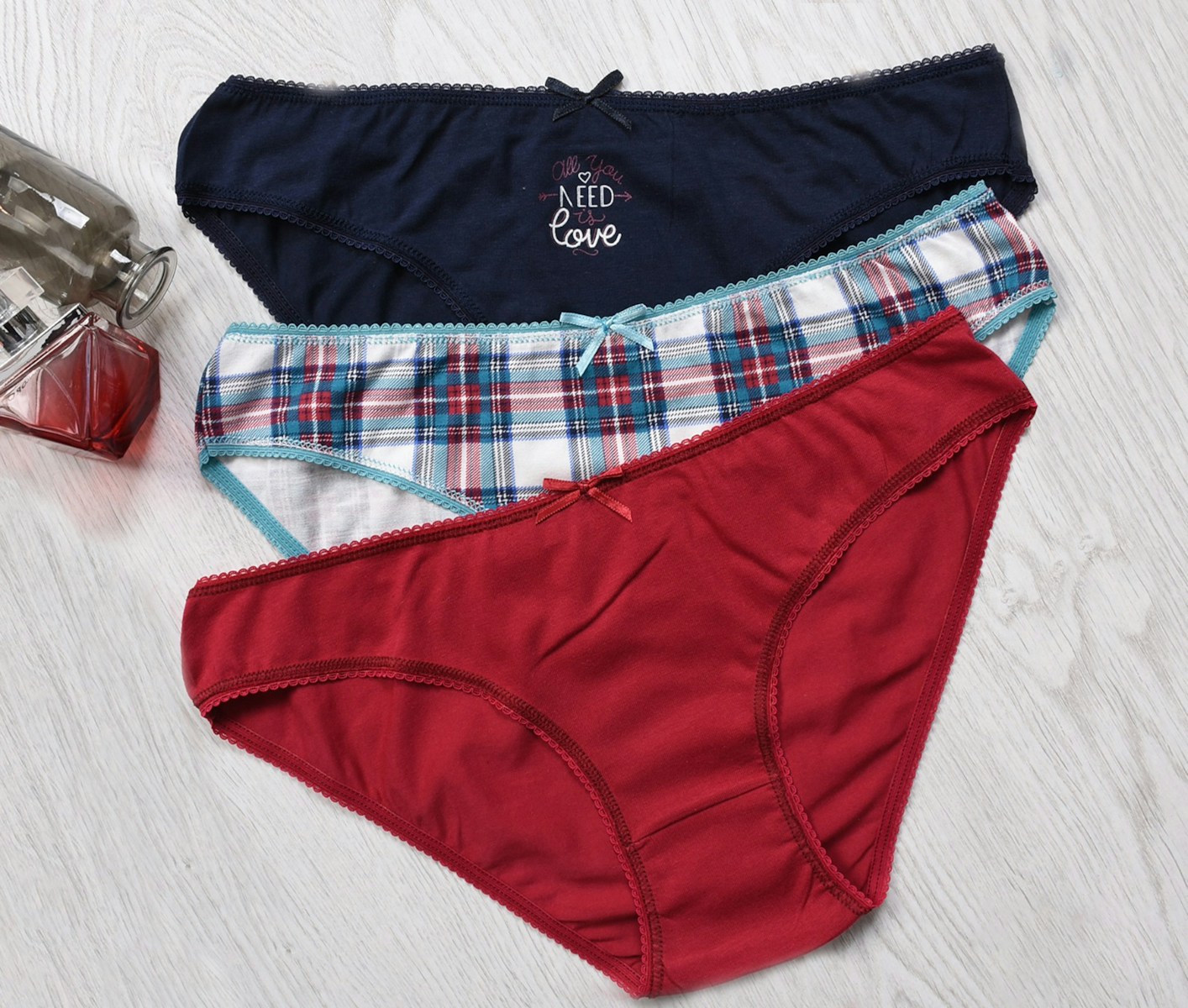How to Say “Underwear” in Spanish: A Comprehensive Guide
Imagine you’re on a dream vacation in Spain, soaking up the sun and enjoying the vibrant culture. Suddenly, you realize you need to buy some new underwear. You walk into a local shop, but when you try to ask for what you need, you draw a blank. The shopkeeper looks at you, waiting, and you can feel your face turning red. It’s a small but crucial word you just can’t remember in Spanish.
Don’t worry, we’ve all been there. Learning how to say everyday items in another language can be a real lifesaver. In this case, knowing that “underwear” translates to “ropa interior” or “calzoncillos” for men and “bragas” for women can save you from an awkward situation.
The Basic Translation: “Ropa Interior”
Speaking another language can make your travels smoother and less daunting. Imagine needing to buy underwear in a Spanish-speaking country and not knowing the right term. You’d probably want to avoid that awkward situation.
Breaking Down “Ropa Interior”
Let’s dig into the term “ropa interior”. It might seem tricky, but once you break it down, it’s quite simple.
“Ropa” – Meaning and Usage
“Ropa” is the Spanish word for “clothing” or “clothes.” Yep, it’s as straightforward as it sounds. Whenever you’re throwing on your favorite outfit, you’d call it “ropa”. This word can refer to any piece of clothing, from a stylish dress to comfy pajamas.
“Interior” – Meaning and Usage
“Interior” means “inside” or “inner.” If you think about your clothing layers, “interior” refers to what’s worn underneath, closer to your skin. It’s what you’d put on before your jeans or shirt. It gives you a hint that “ropa interior” is for those intimate clothing items like bras, panties, and other essentials.
Pronunciation Guide for “Ropa Interior”
Pronouncing it right is key for effective communication. So here’s a quick guide to help you say “ropa interior” like a pro:
Try saying it a few times out loud! It quickly rolls off the tongue, right? Just remember, confidence is your best accessory here.
Using “Ropa Interior” in Sentences
Knowing the word is great, but using it in sentences seals the deal. Let’s bring it to life with practical examples:
Spanish Phrase | English Translation |
|---|---|
Necesito comprar ropa interior nueva. | I need to buy new underwear. |
¿Dónde está la sección de ropa interior? | Where is the underwear section? |
Él prefiere ropa interior de algodón. | He prefers cotton underwear. |
Esa tienda tiene una gran variedad de ropa interior. | That store has a great variety of underwear. |
Alternative Ways to Say “Underwear” in Spanish

Knowing different ways to say “underwear” in Spanish can be handy, especially when shopping or communicating in Spanish-speaking countries. Let’s explore some term variations and their regional uses.
“Ropa Íntima” – A More Formal Alternative
Ropa Íntima translates to “intimate clothing.” This is a more formal and universally accepted term for underwear in Spanish. It’s polite and versatile, making it suitable for various contexts, from shopping to everyday conversation.
Regional Variations of “Underwear” in Spanish
Different regions use distinct terms to refer to underwear. Let’s jump into the specifics for Spain and Latin America.
Spain
In Spain, ropa interior is a commonly used term for underwear. Think of it this way: if you’re in a store and need help finding underwear, asking for ropa interior will always get you what you need without any confusion.
Latin America
Latin America is diverse, and so are its terms for underwear. In several countries, you might hear prendas íntimas as a formal term. This phrase emphasizes the intimate nature of the clothing.
Slang Terms for Underwear (Use with Caution)
Every language has its slang, but it’s essential to know which terms are appropriate in different settings. Here are a couple of slang terms you’ll encounter:
Using slang can be fun and make you sound more like a native speaker, but always gauge the situation and audience before using it.
Term | Meaning | Formailty | Region |
|---|---|---|---|
Ropa Íntima | Intimate clothing | Formal | Spain, Latin America |
Ropa Interior | Interior clothing | Formal | Spain |
Prendas Íntimas | Intimate garments | Formal | Latin America |
Calzones | Underpants | Informal | Some Latin American countries |
Calzón | Underpants | Informal | Certain Latin American regions |
Understanding these variations enriches your vocabulary and helps you navigate different Spanish-speaking cultures with ease.
Specific Types of Underwear in Spanish
Talking about underwear in Spanish can be both practical and fun. You’ll find specific words for different types of underwear, adding some local flair to your conversations.
Men’s Underwear Vocabulary
Men’s underwear comes with a few distinct terms in Spanish.
“Calzoncillos” (Boxers or Briefs)
When referring to boxers or briefs, you use calzoncillos. It’s a common and straightforward term. Picture yourself shopping in a bustling Spanish market; it’s handy to know, “¿Dónde están los calzoncillos?”
“Calzones” (Another Term for Men’s Underwear)
Another word you might hear is calzones. While it also means underwear, it’s used in various regions. Imagine the helpful shopkeeper guiding you, “Tenemos calzones de varios tamaños.”
Women’s Underwear Vocabulary
For women, several words articulate specific kinds of underwear.
“Bragas” (Panties)
You’d say bragas for panties. Whether you’re chatting with friends or buying new underwear: “Me encantan estas bragas coloridas.”
“Sostén” or “Sujetador” (Bra)
When discussing a bra, use sostén or sujetador. Both terms are interchangeable. Picture a friend advising you on the perfect fit: “Este sostén es muy cómodo.”
Unisex Underwear Terms
Some words apply to everyone and cover specific types of underwear.
“Camiseta Interior” (Undershirt)
For undershirts, the term camiseta interior is used. You might tell someone, “Necesito una camiseta interior para el frío.”
“Ropa Térmica” (Thermal Underwear)
Discussing thermal underwear, you’d say ropa térmica. Imagine preparing for a winter trip and telling your travel companion, “No olvides tu ropa térmica.”
Here’s a table to sum it all up:
English Term | Spanish Term |
|---|---|
Boxers or Briefs | Calzoncillos |
Men’s Underwear | Calzones |
Panties | Bragas |
Bra | Sostén/Sujetador |
Undershirt | Camiseta Interior |
Thermal Underwear | Ropa Térmica |
Knowing these terms makes shopping, packing, or just chatting easier and more fun. Plus, it adds a local Spanish touch to your conversations.
Practical Situations: Using “Underwear” in Spanish Conversations

Exploring everyday situations in a new language can be both challenging and exciting. Whether you’re shopping for essentials or trying to express your preferences, knowing how to say “underwear” in Spanish can be incredibly useful.
Shopping for Underwear
Imagine you’re in a bustling Spanish market or a chic boutique. You need to ask about sizes, styles, or even specific types of underwear. Here are some key phrases to help you out.
Asking for Sizes and Styles
To get the right fit and style, you might need to ask a few questions. Knowing your size and preferred style is crucial.
English Sentence | Spanish Translation |
|---|---|
Do you have underwear for men/women? | ¿Tienen ropa interior para hombres/mujeres? |
What’s your size? | ¿Cuál es tu talla? |
What style do you prefer? | ¿Qué estilo prefieres? |
These questions will help you find exactly what you need, whether it’s for a special occasion or everyday wear.
Describing Preferences
Expressing your preferences ensures you get the comfort and style you desire. Here are some phrases to articulate what you’re looking for.
English Sentence | Spanish Translation |
|---|---|
I like cotton underpants. | Me gustan los calzoncillos de algodón. |
I prefer bras with lace. | Prefiero sostenes con encaje. |
I need underwear for running. | Necesito ropa interior para correr. |
Sharing your preferences can make shopping a breeze, ensuring you leave with items that fit your style and needs perfectly.
By mastering these phrases and sentences, you can confidently shop for underwear in Spanish-speaking countries, making your experience smoother and more enjoyable.
Cultural Considerations When Talking About Underwear in Spanish
Exploring the vocabulary of underwear in Spanish can get tricky due to regional nuances and cultural sensitivities. The words you use matter; they can significantly impact the understanding and smoothness of your conversation.
Appropriate Contexts for Underwear Discussions
Everyday conversations might require discussing underwear, especially while shopping or chatting with friends. Using “ropa interior” is generally safe across Spanish-speaking regions, encompassing all types of underwear without regional specificity. In a store, you might say, “¿Dónde están las secciones de ropa interior?” (Where are the underwear sections?). If a friend asks for packing advice, use something casual, like, “No olvides tus calzones.” (Don’t forget your underwear.).
Politeness and Euphemisms
Talking about underwear requires delicacy due to cultural taboos. Euphemisms soften the conversation, avoiding discomfort. For example, instead of asking directly about someone’s underwear preference, you could frame it as, “¿Qué tipo de ropa interior prefieres?” (What type of underwear do you prefer?). Cultural norms around modesty and privacy might make these conversations tricky, but using polite language shows respect.
Gender Considerations
Gender plays a significant role in discussing underwear. Terms vary: “calzoncillos” for men’s underwear, “bragas” or “pantaletas” for women’s, and “ropa interior unisex” for everyone. When shopping, you may hear, “Busco calzoncillos de algodón.” (I’m looking for cotton underwear.) or, “Prefiero bragas sin costura.” (I prefer seamless underwear.). Understanding these distinctions enhances communication and shows cultural awareness.
Region | Common Terms | Example Usage |
|---|---|---|
Spain | Ropa interior, bragas | “Busco bragas cómodas.” |
Mexico | Calzones | “¿Dónde están los calzones?” |
Caribbean | Pantaletas | “Pago por las pantaletas aquí.” |
Argentina/Uruguay | Bombachas | “Estas bombachas son elegantes.” |
Exploring these nuances will make your interactions smoother and more culturally sensitive, enriching your language experience.
Common Phrases and Expressions Related to Underwear in Spanish
You’ve learned common vocabulary for underwear in Spanish. Now, let’s jump into some fun and useful phrases and idioms related to underwear, bringing cultural layers to your conversations.
“Quedarse en ropa interior” (To be left in one’s underwear)
When you hear “quedarse en ropa interior”, it literally means someone is left in their underwear. Imagine being at home, relaxing in your cozy clothes, and suddenly hearing a knock at the door. You rush to grab a robe because you don’t wanna be caught in your unders. This phrase isn’t just literal; it’s used figuratively when someone is caught unprepared or exposed in an unexpected situation.
“Conocer hasta la ropa interior de alguien” (To know someone inside out)
If someone says they “conocer hasta la ropa interior de alguien”, they know that person extremely well. Picture your best friend who knows all your quirks, favorite food, and secrets. This idiom dives deep into the concept of knowing someone intimately. Next time you wanna brag about understanding a friend’s thoughts before they speak, drop this phrase for a fun twist.
Other Related Idioms and Their Meanings
Let’s explore more idioms that throw underwear into the mix. They might sound quirky but are packed with cultural fun:
Spanish Phrase | Translation | Use Case |
|---|---|---|
Quedarse en ropa interior | To be left in one’s underwear | Someone caught unprepared or exposed in a sudden situation. |
Conocer hasta la ropa interior de alguien | To know someone inside out | Knowing someone extremely intimately, like best friends. |
Ponerse los pantalones | Putting on the pants | Taking charge or showing responsibility in a given situation. |
Llevar los pantalones en la relación | Wearing the pants in the relationship | Describes the dominant decision-maker in a relationship, often with a playful tone. |
Conclusion: Mastering “Underwear” Vocabulary in Spanish
Learning how to talk about everyday items like underwear in Spanish not only helps you in practical situations but also enriches your cultural understanding. By familiarizing yourself with terms like “calzoncillos,” “bragas,” and “sostén,” you can navigate shopping and conversations with ease.
Don’t forget the fun phrases and idioms you’ve picked up along the way. They add a touch of authenticity to your speech and can make interactions more engaging. Whether you’re discussing regional nuances or simply trying to buy the right pair, knowing this vocabulary is a valuable skill.
So go ahead and practice these words and phrases. The more you use them the more natural they’ll become. Happy learning!
Frequently Asked Questions
How do you say “underwear” in Spanish?
In Spanish, “underwear” is commonly referred to as “ropa interior.” Additionally, specific terms include “calzoncillos” for men, “bragas” for women, and “sostén” for bras.
What are the regional differences in words for “underwear”?
Terms for underwear vary by region. In Spain, “bragas” refers to women’s underwear, while in Mexico, “calzones” can refer to both men’s and women’s undergarments. In the Caribbean, “pantaletas” is used more commonly for women’s underwear.
Are there any cultural considerations to keep in mind when discussing underwear in Spanish?
Yes, cultural and regional nuances are important. For instance, the term “calzones” may have different connotations in various Spanish-speaking countries. Always be considerate and aware of regional differences in language use.
Some interesting idioms include “quedarse en ropa interior” (to be left in underwear) and “conocer hasta la ropa interior de alguien” (to know someone very well). These phrases add cultural depth and humor to conversations.
What does the Spanish idiom “ponerse los pantalones” mean?
The idiom “ponerse los pantalones” literally means “to put on the pants” and is used to imply taking control or making decisions, similar to “wearing the pants” in English.
How is “llevar los pantalones en la relación” used in Spanish?
“Llevar los pantalones en la relación” translates to “wearing the pants in the relationship,” meaning the person who is in charge or makes the majority of decisions in a relationship.






